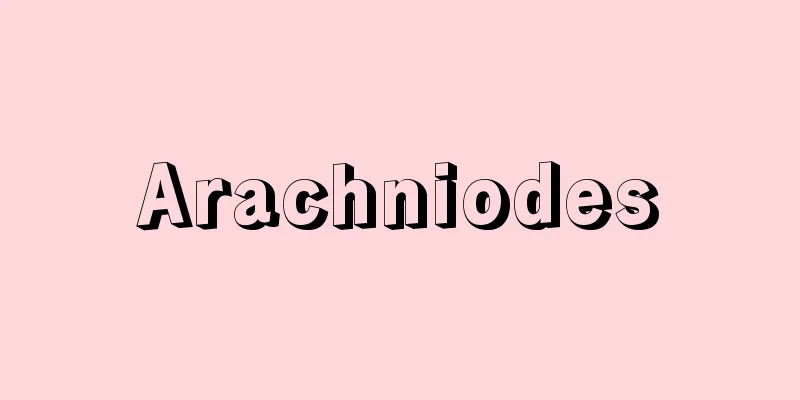Sunshoan Shikishi

|
This is a masterpiece of ancient calligraphy, counted as one of the three great shikishi along with "Tsugishikishi" and "Masu shikishi." It is believed to have been copied in the late Heian period (late 11th century). It contains poems about the four seasons from the "Kokin Wakashu." The writing paper is imported karakami paper with a variety of stencil patterns (tortoise shell, flowers, arabesque, etc.) printed with mica on a white, indigo, or brown background. It was originally a booklet bound in a butterfly motif. In the early modern period, 36 of these fragments were pasted on the sliding doors of Nanshu-ji Temple in Sakai, but 12 of them came into the possession of Sakuma Shogen Sanekatsu (1570-1642), who, together with fans depicting the meaning of the poems, fashioned them into a collection of poems and treasured them. After his death, they were donated to the teahouse Sunshoan at Ryukoin, a subtemple of Daitoku-ji, which was his family temple. This is where the name of the collection comes from. Currently, the collection is divided among various families. The beautiful continuous, strong, full lines and the exquisite scattering that gives the impression of a vast universe in a small space are highly regarded. The tradition that it was written by Ki no Tsurayuki is, of course, incorrect. [Tamiko Oshita] "Japanese Famous Places Collection 49: Sunshoan Shikishi" edited by Komatsu Shigemi (1981, Nigensha)" ▽ "Heian Period Kana Famous Places Selection 5: Sunshoan Shikishi" edited by Iijima Inataro (1956, Shogei Bunka Shinsha)" Source: Shogakukan Encyclopedia Nipponica About Encyclopedia Nipponica Information | Legend |
|
「継(つぎ)色紙」「升(ます)色紙」とともに三色紙の一つに数えられる古筆中の名品。平安後期(11世紀後半)の書写と推定される。『古今和歌集』の四季の歌を書いたもので、料紙には白、藍(あい)、茶などの具引き(胡粉(ごふん)引き)地にさまざまな型文様(亀甲(きっこう)、草花、唐草(からくさ)など)を雲母(きら)で刷り出した舶載の唐紙(からかみ)を用いており、もとは胡蝶(こちょう)装の冊子本。近世の初め、その断簡36枚が堺(さかい)の南宗(なんしゅう)寺の襖(ふすま)に貼(は)られていたが、うち12枚を佐久間将監実勝(さくましょうげんさねかつ)(1570―1642)が掌中にし、歌意を描いた扇面とともに帖(じょう)に仕立てて愛蔵、没後は菩提(ぼだい)寺である大徳寺塔頭(たっちゅう)竜光院(りょうこういん)の茶室・寸松庵に施入された。命名はこれに由来する。現在は諸家に分蔵。強靭(きょうじん)で充実した線の美しい連綿、小さな空間に広大な宇宙を感じさせる絶妙な散らしは高く評価されている。紀貫之(きのつらゆき)筆の伝承はむろん誤りである。 [尾下多美子] 『小松茂美監修『日本名跡叢刊49 寸松庵色紙』(1981・二玄社)』▽『飯島稲太郎編『平安朝かな名蹟選集5 寸松庵色紙』(1956・書芸文化新社)』 出典 小学館 日本大百科全書(ニッポニカ)日本大百科全書(ニッポニカ)について 情報 | 凡例 |
<<: Sunda [Archipelago] - Sunda
Recommend
National People's Congress - National People's Congress
The legislative body of the People's Republic...
Constitutional Law - Kenpo Satsuyo
Book by Minobe Tatsukichi. Published in 1923. Alon...
Trunk - toranku (English spelling)
A type of large travel bag. It was imported in th...
Crown - Crown
A word derived from kouburi, komburi, and kamuri. ...
rigidity of soft birth canal
...Premature rupture of the membranes occurs afte...
Upper bound
A subset of an ordered set M , for example, a set ...
Bhutto, Benazir
Born: June 21, 1953, Karachi [Died] December 27, 2...
Ando-shi
A samurai family of the early modern period. In th...
Tractatus amoris (English spelling)
…He is said to have served as the court chaplain ...
Shiro Murano
Poet. Born in Tokyo on October 7, 1901. Graduated...
Huaiqingfu - Kaikeifu
...It occupies roughly the two areas of today'...
Inokuchi
...The city center is located in the northern par...
Prince Hoshikawa
Year of birth: Year of birth and death unknown. A ...
Spitzweg, Carl
Born: February 5, 1808 in Munich Died: September 2...
Annibale Caracci - Annibale Caracci
…He also produced works such as The Conversion of...









